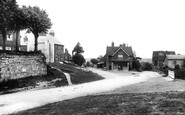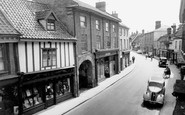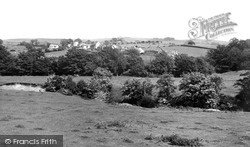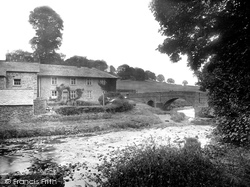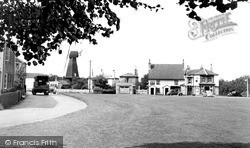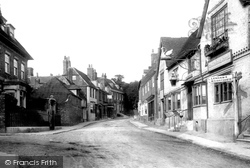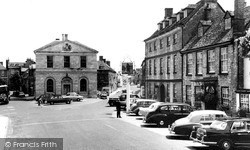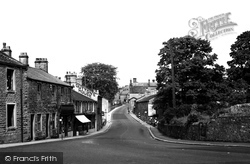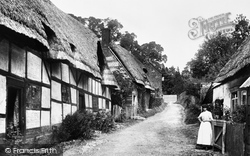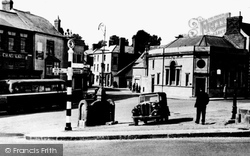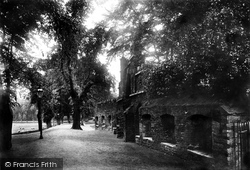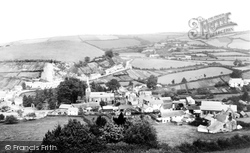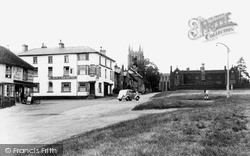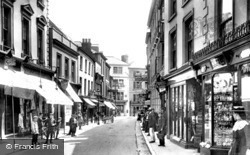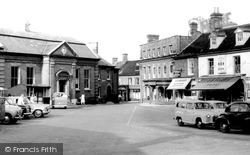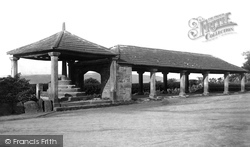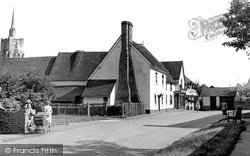Places
1 places found.
Those places high-lighted have photos. All locations may have maps, books and memories.
Photos
Sorry, no photos were found that related to your search.
Maps
5 maps found.
Books
Sorry, no books were found that related to your search.
Memories
433 memories found. Showing results 1 to 10.
So Many Happy Hours
I spent so many happy summer holidays in Great Barton, and in particular Conyers Green where my Aunt Norah Lovelace lived in a cottage next to the old chapel building. I cycled often to the village store/post office, and to ...Read more
A memory of Conyer's Green by
Doe Lea In Ww2
I arrived in Doe Lea in June 1940 with other evacuees from Lowestoft, Suffolk. I lived in Doe Lea untill 1944. At first we were not accepted by the local children, eventually we mingled and became friends, since the war have been back ...Read more
A memory of Doe Lea in 1940 by
Looking Back
I was born in St Peters St, Islington, 1935, bombed out late 1943, with nowhere to go, had a makeshift home in Aloysius College for a time until we were given a place in 4 Montague Road, Honsey, N8, that's where I knew what it was like to ...Read more
A memory of Hornsey in 1944 by
Happy Times
As children we were very priviliged to be part of the village community. We spent many carefree hours playing and making camps in the woods and fields, sometimes we would venture further but had to keep a watchful eye for the keepers. ...Read more
A memory of Turners Hill in 1965 by
Living In North Boarhunt 1965 1968
My parents moved to North Boarhunt in 1964/65. We lived at the top of Trampers Lane - sideways to what was then Doney's Garage. Our house was called "Tryfan". I went to Newton Primary School and have very fond ...Read more
A memory of North Boarhunt in 1965 by
Early Years Of My Life
I was born in 1936 in Shipley nursing home and we lived at 1 The Green, Micklethwaite until 1944. My father died in 1941 and my mother was left with me and brother John, surname Walker, to bring up on her own. I ...Read more
A memory of Micklethwaite in 1930 by
Combe Florey Primary School
The village school in Combe Florey closed in about 1958 I believe, it exists as a private house now, but I can still remember the mile long walk to and from it, through the lanes every morning and afternoon. Mum would ...Read more
A memory of Combe Florey in 1958 by
The Memories Are Endless
Good morning from Waterloo, Canada. I was absolutely thrilled with your site and stumbled on it quite by chance. I was born in 1943 at my grandparents house at Yew Tree Terrace just off Station Rd. I grew up in Shepley, ...Read more
A memory of Shepley in 1957 by
My Schooldays 1952 54 Near Skipton
My Grandparents lived at 26 Otley Street in Skipton from the 1940 ( or earlier ) and I had first visited them in 1945 after VE day, They were Thomas Henry Jackson, my Grandmother Charlotte Jackson and their batchelor ...Read more
A memory of Skipton in 1952 by
A Long Time Ago
In memory land way back in the mists of time, two small boys left these shores and sailed away across the seas to New Zealand, the land of the All Blacks rugby team. They left behind many fond memories and have never really ...Read more
A memory of Halesworth in 1947
Captions
23 captions found. Showing results 1 to 23.
By Bull Beck Bridge is the Black Bull Inn, where a cat sits beside a boot-scraper, perhaps waiting for opening time?
Brookhouse has a plague stone at Bull Beck Bridge near the Black Bull Inn, and is proud of its proximity to Crook O' Lune, the famous beauty spot painted by Joseph Mallord Turner RA.
The Black Bull Inn became the Youth Hostel, and the Dog Inn is now the Hark to Bounty. Pack horse trains from different directions met at this point, the heart of Slaidburn in past centuries.
A horse takes a breather and feeds from its nosebag on the pavement.The cart on the left looks like a brewer's dray - in the back are barrels - and is probably delivering to the Black Bull on the right.There
The cart on the left looks like a brewer's dray - in the back are barrels - and is probably delivering to the Black Bull on the right.
The cart on the left looks like a brewer's dray - in the back are barrels - and is probably delivering to the Black Bull on the right.
The black-painted smock windmill, set back from the road, and the prominent Cricketers pub facing the local cricket pavilion, are both local landmarks.
These two views of the steep high street as it winds up the hill towards Canterbury show some of the rich assortment of buildings built of brick or black-and-white half timbering.
These two views of the steep high street as it winds up the hill towards Canterbury show some of the rich assortment of buildings built of brick or black-and-white half timbering.
The Black Prince was born here.
Beyond Martin's Bank and the shops is the Black Bull Inn, which carries a date stone of 1855. A little way beyond, set back from the road, is the Brown Cow.
We are looking towards Back Lane. This is a street mainly of 16th- or 17th- century timber-framed cottages.
The old King's Arms opened in 1749, and opposite it is the Black Bull, dating back to 1758.
The black and white signpost in the foreground will bring back nostalgic memories for some of motoring as it was half a century ago.
This area dates back to the Middle Ages. This gate was manned for almost twenty- four hours, and was used to collect tolls from visitors and merchants on their way through to the town.
The old King's Arms opened in 1749, and opposite is the Black Bull, dating back to 1758.
Looking north, the road runs close to the church whilst a back lane to Yarnacott - in the distance - climbs out of the valley.
The Black Lion was rebuilt in c1840, but stands on the site of an earlier inn of the same name, which can be traced back to c1660.
Looking back towards Boutport Street in 1903, Brook's is still a cafe. It became Bromley's Restaurant in the 1940s until it closed at the end of the 1960s.
Back in the days of Edward II, it was the principal town in the region for making fine linen. Its products were shipped to Yarmouth on barges capable of carrying several tonnes of material.
Trade at the original site was decimated in 1787 by an outbreak of Black Plague. The stocks on the left were still in use in 1870 - they were reputedly the last to be used in Yorkshire.
It also recalls the tragedy wreaked on the countryside by the Black Death and plague in the form of a graffito, '1350, wretched, fierce, violent - the dregs of the people survive to tell the tale'.
The square tower of St Mary's can be seen peeping out at the centre back of the picture.
Places (1)
Photos (0)
Memories (433)
Books (0)
Maps (5)









